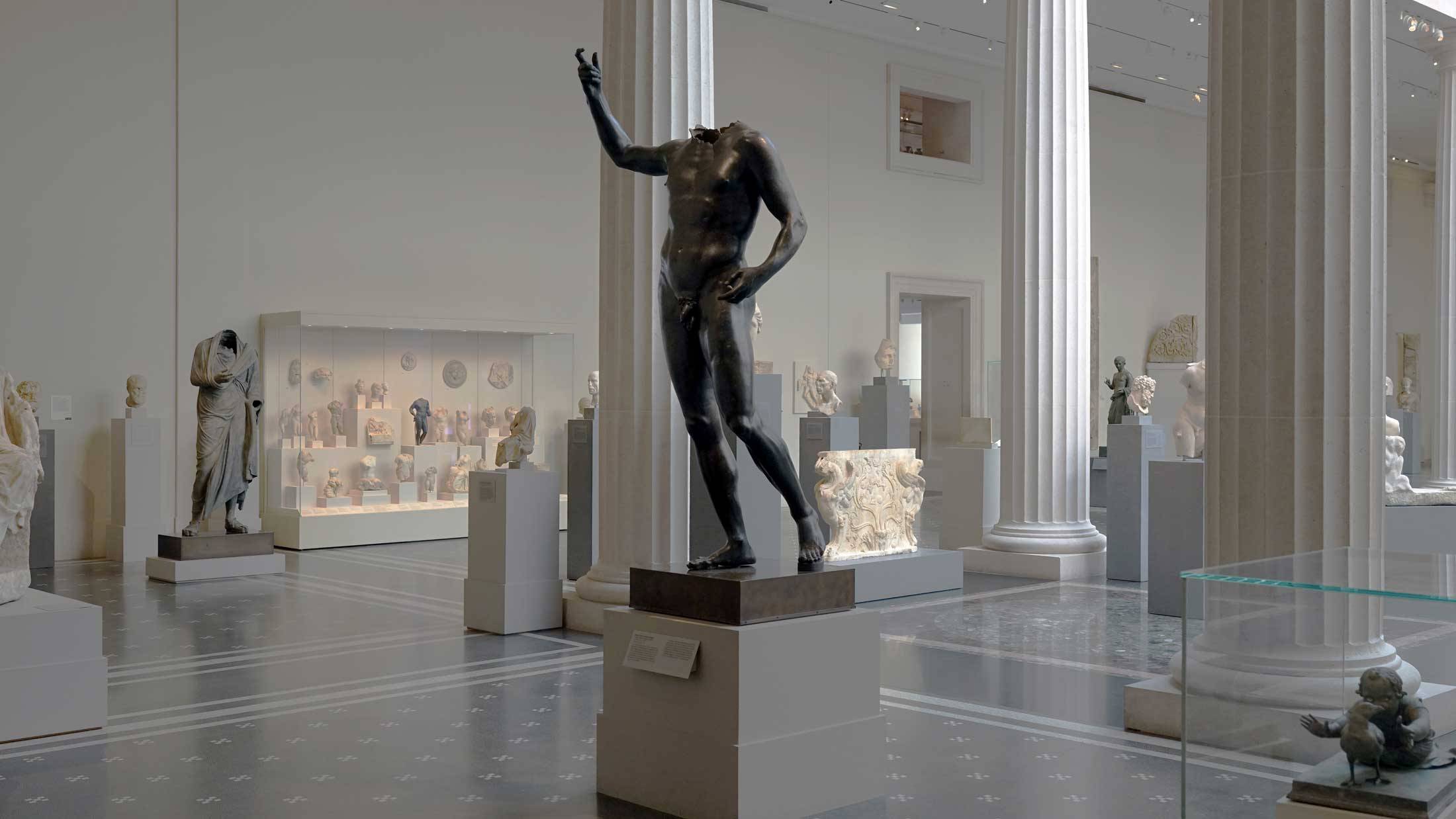At some point in the 1960s, local farmers in southwest Türkiye uncovered a stunning group of ancient life-size bronze figures in rocky terrain outside their village, which had once been the site of the Roman city of Bubon. Instead of notifying authorities, as Turkish law requires, the villagers secretly dug out the whole area and sold the finds — statues and fragments dating back to the second century C.E. — to an international art smuggler.
Through the ensuing decades, the looted artworks made their way to dealers on the international market and, eventually, into American museums from Worcester, Mass., to Santa Barbara, Calif.
One of the statues, a six-and-a-half-foot-tall headless bronze, believed to represent the Roman emperor Septimus Severus, was loaned by an anonymous collector to New York City’s Metropolitan Museum of Art in 2011. Last February, the statue was one of three objects seized from the museum following a criminal investigation by the Antiquities Trafficking Unit of the Manhattan District Attorney’s Office. In a press release, the office credits Elizabeth Marlowe, associate professor of art and art history, with “investigative support” leading to the seizure.
Marlowe, an expert in ancient art, has long argued that an artwork’s historical grounding — that is, information about its original source and context — is essential to our understanding of it. In September 2022, she published an essay in the online art journal Hyperallergic in which she pointed to the Bubon group as an egregious example of the practice of vague or deceptive labeling of artworks by museums — something that scholars, dealers, and museum professionals are aware of but rarely acknowledge. (The practice is commonly used in cases of dubious provenance, such as Nazi-looted artworks or works plundered by colonial forces.)
Despite the strong likelihood that the Met’s figure was one of those stolen from Bubon — due to the details of its ownership history and its similarity to the one remaining statue at the site, among other signs — the gallery label was conspicuously vague, identifying it as “Greek or Roman, Hellenistic or Imperial.”
“The strategy with labels for this group has been to pretend that ‘Some people think this might be from Bubon, but we don’t really know, there’s no hard evidence,’” she says. “But the reason there’s no hard evidence is because the smugglers covered their tracks. We know these were looted from somewhere, and the circumstantial evidence all points to Bubon.”
Over the years, Marlowe became increasingly distressed by the fact that, although art historians have long known what she calls the “awful backstory” of Bubon, it has not been openly recognized or written about, let alone included in textbooks.
“It was time to be a little braver,” she says.
Marlowe visited several of the museums where the Bubon pieces are on display and documented what the labels said about their “findspots.” In her piece, she explains that “some U.S. museums value the retention and growth of their collections to the near-exclusion of all other concerns,” equating the Met’s disingenuous labeling to a “laundering operation” that “betrays the museum’s scientific and educational mission.” But she calls out the other museums whose collections contain Bubon artifacts, as well.
“I wanted to show this is systemic. All of these institutions have this problem. That means we all need to work on it together,” she says.
Indeed, Marlowe believes museums must share — with each other and the public — the truth about the items in their collections, even if it means the country of origin ends up asking the museum to give some pieces back.
And that is exactly what happened in the case of the Septimus Severus statue. According to Marlowe, her Hyperallergic article had the effect of renewing interest in the Bubon statues among Turkish cultural authorities, and they turned to the Manhattan DA’s office, which, along with Homeland Security Investigations and the Turkish Ministry of Culture and Tourism, was already conducting a criminal investigation into several illegally obtained antiquities.
Shortly after the prosecutors seized the bronze statue of Septimus Severus, plus two other heads from the Bubon group — one at the Met and another from the Museum of Greek, Etruscan, and Roman Art at Fordham University — the objects were returned to Türkiye in a repatriation ceremony.
More and more, scholars, the public, and even politicians are questioning the acceptability of museums possessing what amount to stolen goods. In 2017, for example, French President Emmanuel Macron pledged to return artifacts that were acquired as a result of France’s colonial presence in Africa. Other European countries soon followed suit.
Marlowe, who acknowledges that scholars in Native American studies and anthropology were grappling with questions of problematic provenance long before art historians, says that her students are much more attuned to issues of decolonization and cultural heritage than she was as an undergraduate. Six years ago, she helped to found Colgate’s interdisciplinary Museum Studies Program so students could explore these questions and more through courses in art history, anthropology, history, and other disciplines.
For all her criticism of duplicitous museum practices, Marlowe stresses that she is not anti-museum: “Museums should be places where we go to learn about and celebrate other cultures,” she says. “The idea that the artwork is there despite the vociferous objections of the people to whom it actually belongs, or simply without the consent of the community from which it originates — I don’t want that to be what museums represent.”
Those who oppose returning works of cultural heritage to their source often deploy the “slippery slope” argument, contending that museums will end up as empty shells. Marlowe disagrees, pointing out that “most countries are thoughtful about which pieces are meaningful to their living culture,” and none is asking that every stolen item be returned.
Rather, she envisions a sort of reverse-slippery slope: “I hope that being repositories of unethically acquired things will seem intolerable to museums,” she says. “That would be a shift in their moral paradigm.”
— Sarah C. Baldwin

